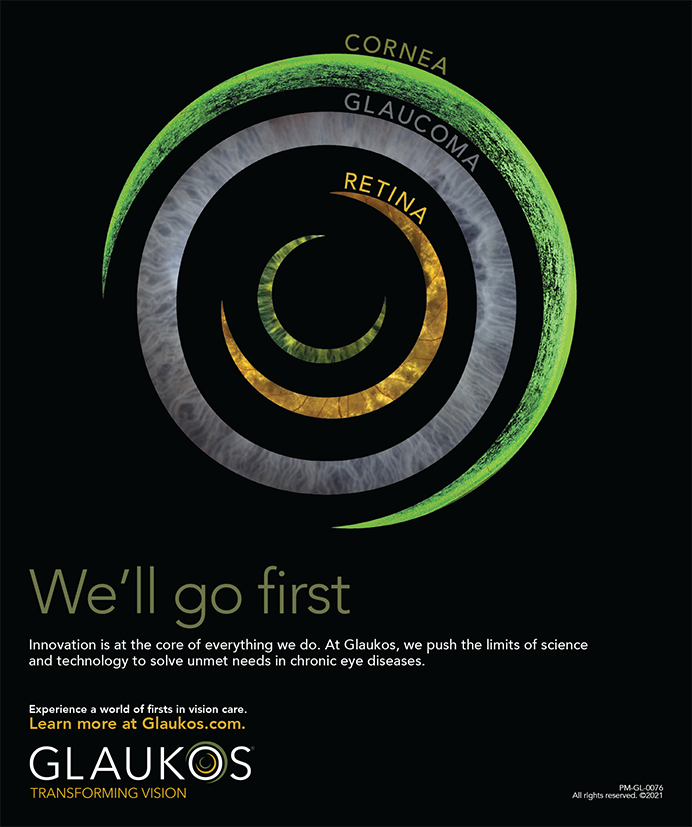These Patients Can Present Unique Challenges
Kendall E. Donaldson, MD, MS

I like to remind myself of two things whenever I am advising a patient who is unhappy with another provider:
No. 1: I could be that provider.
No. 2: My family member or I could be that patient.
With those two thoughts in mind, I begin these consultations by validating the concern that brought these patients to seek my care without telling them I agree or disagree with their conclusions. These patients often have an accusatory or inflammatory tone when they feel they haven’t achieved their intended goals. Their conclusions are often emotional rather than based on an objective finding or experience. I try to summarize and repeat their concerns more objectively without assigning blame or conveying an emotion. I remind them that the goals of the visit are to move forward (not look back), achieve their aim, and, ultimately, improve their level of satisfaction by helping to address the problem that brought them into my office. Some patients may be fixated on their anger, and multiple visits may be required to achieve a more productive viewpoint.
I often tell patients that I would be happy to work with their original doctor in an effort to achieve their clinical goals. I will even ask their permission to call and discuss the case with the original provider if I feel that doing so could help resolve the problem or create a better, more functional working relationship with the patient.
Consultation
It is impossible to please every patient. When I have dissatisfied patients of my own, if, after spending extra time and working to resolve the issue, I cannot help them achieve their goals, we discuss the option of a consultation with another provider. I offer these patients an opportunity to seek their own consultations, or I offer to refer them to a respected colleague. This approach gives them a level of control over their situation. I actually find it much easier to manage a dissatisfied patient of one of my colleagues than someone who is dissatisfied with my care after my exhaustive efforts. This shows the value of recommending consultations when dealing with frustrated or disappointed patients. Patients truly appreciate knowing they have a team working for their best interests.
Case Example
I work in a tertiary care facility, which tends to attract these challenging patients on a daily basis. I recall one patient who presented to my clinic after undergoing cataract surgery and the implantation of a multifocal IOL. She had been unhappy with her quality of vision and had undergone an IOL exchange. Subsequent corneal decompensation left her with 20/400 VA. She was the office manager for the ophthalmologist who performed her surgery, and she hadn’t returned to work since her IOL exchange. The surgeon referred her for an evaluation and treatment. Managing the medical aspect of her case with endothelial keratoplasty was much easier than managing the relationship and emotional escalation between the patient and her surgeon/employer.
Although this example is a bit extreme, the psychosocial or emotional aspect of a patient’s dissatisfaction is often more challenging to negotiate than is managing the medical issue underlying the complaint. Trying to separate the two in the patient’s mind can often be the most challenging part of managing these cases.
Conclusion
Dissatisfied patients require extra time and attention in order to manage their emotions as well as their medical issues. It is helpful to allot ample time for these visits when possible. Most important is establishing a partnership directed toward achieving their original goals and expectations.
Approach These Patients With Care
John A. Hovanesian, MD

No matter how hard we try for our patients, there will inevitably be some who are not happy with the care they have received, and they are going to seek a second opinion. In my view, seeking a second opinion is positive because it means the patient is engaged in finding their best outcome.
This search for a different opinion can sometimes lead the patient in the right direction and sometimes in the wrong one. Many patients seeking a second opinion are angry, suspicious, or scared. Each of the strategies I use to caring for these patients is aimed at ensuring my second opinion leads them in the right direction—toward a positive outlook, collaboratively seeking the best possible result with their doctors.
Listen to the Patient’s Story
I think first and most important is to listen to patients who are unhappy and seeking a second opinion and to let them tell their stories. In so doing, it is usually possible to discern what emotion patients are primarily feeling, which improves my ability to address the problem(s).
Validate the Patient’s Concern
Validating a patient’s concern does not mean inappropriately criticizing the care delivered by another doctor. It is possible to understand someone’s concern without suggesting or conceding that an error occurred when it probably did not. That said, it is important to let the patient know what I really think is going on, even if it differs from the opinion or treatment given by another doctor. The goal is to direct the patient to the necessary treatment, not to judge the prior doctor’s care. I wasn’t there at the time of the original treatment. I don’t know what was said or seen during that previous encounter. I only know what the patient is telling me, which is often a distorted view of the past reality.
Moderate Your Tone of Voice
Tone of voice can affect the dynamic between the doctor and the patient seeking a second opinion. We doctors often adopt a way of speaking to patients that differs from how we speak in most other circumstances. We put on our doctor voice: We tend to talk a little bit slower, to use less intonation up and down, and to use more formal language.
I think it’s really important to speak to these patients in a tone similar to what we would use with a friend because that’s what these patients need—a friend. That means using a fluid cadence of speech, more intonation, and making facial expressions that convey the appropriate emotion. Of course, what these patients truly need most is an expert opinion, but a friendly tone of voice can buy a lot of trust and credibility.
Give the Benefit of the Doubt
Occasionally, a patient will ask whether their previous doctor made a mistake or did something wrong. We should be honest in our response, but most often the only honest response is that, without having been there at the time of the evaluation and without seeing what the doctor saw at that time, there is no way to judge what decision they could or should have made.
In my experience, it’s better to encourage patients to focus on what to do next. Most patients understand that medical care is complex. This approach helps them to walk away with a better understanding of what happened.
The Appropriate Approach Depends on the Reason for the Request
John W. Potter, OD, MA

In the modern practice of refractive surgery, requests for a second opinion generally have one of two origins, which I refer to as illness and disease. Although most clinicians intuitively know the difference between the medical terms, these words are a bit harder to define in this context. For this article, disease refers to the objective nature of the request for a second opinion, and illness refers to how the patient requesting a second opinion feels about the circumstances that prompted the request. Almost always, the request for a second opinion skews one way or the other.
Origin No. 1: Illness
Refractive surgery engages the entire visual system. A patient may achieve an excellent visual outcome yet be greatly upset about their vision. For example, this past year, I spent nearly a week talking with a patient who was despondent. The problem? Visual acuity was 20/15 instead of 20/20. Everything he had read before surgery told him that 20/20 was a good outcome and that some patients saw better than 20/20 after surgery, and in his mind, 20/15 was not as good as 20/20.
We spent time looking at internet sites that showed images of Snellen charts, ETDRS charts, and other narratives that support the distinction between 20/20 and 20/15. This patient had a long list of concerns and grievances that would bewilder most reasonably qualified clinicians. I listened respectfully to the patient. When he began to repeat his narrative, I said, “You have told me this already. Is there anything else I need to know that we have not discussed?” In response, the patient soon began to talk about his fears that he might lose vision in the future. He often asked a baiting question such as, “Isn’t it possible I might lose vision in the future because of [whatever was on the list at the moment]?” My response was open, objective, and unspecific: “Anything is possible.”
In a situation similar to this, clinicians often become uncomfortable and impatient as the allotted time for the appointment winds down. I recommend being objective instead. For example, I may say, “We are out of time today, so we will need to reschedule you.”
Basically, the more subjective the matter, the more reasonably objective my response. On the other hand, allowing him to engage constructively on the issue allowed us to resolve it together.
Origin No. 2: Disease
The other reason for requesting a second opinion is disease. In refractive surgery, this most often comes in the form of a complication. In modern clinical care, patients may seek third and fourth opinions.
Many refractive surgeons neither agree to see patients seeking a second opinion nor to see another refractive surgeon’s patient for any reason. The issue can be the difference between formal and informal rights. Informed consent is a good example of a formal right. Surgery requires properly executed informed consent.
An example of an informal right is the premise that a complication is somehow negligence malpractice, which suggests that a patient has the right not to experience a complication. This stance is prevalent in modern health care, and it is especially prevalent among the youngest generations. As a result, a request for a second opinion can be problematic, so many refractive surgeons avoid giving one.
In the past, physicians who provided second opinions were careful not to disparage the original surgeon. Today, there are refractive and nonrefractive surgeons who will say, “You should never have had surgery in the first place.” This occurs whether the statement is defensible and accurate or not. It is foolish to be less than forthright. If a patient is pursuing a second opinion for litigation, a request for medical records can be anticipated, and the original surgeon and the physician giving a second opinion will likely be deposed.
A request for a second opinion can become a request for additional surgery from the person who provided the second opinion. This is another example of the difference between formal and informal rights. The most effective approach draws on clinical training and experience to provide a response that is transparent and objective but also empathetic. If further surgical intervention is not advisable, a reasonable response is, “You are not an ideal candidate for additional surgery at this time” or “I would rather apologize to you now for not doing additional surgery than apologize to you for the rest of your life if your outcome is less than a desirable outcome.”
Reassurance Is Key
George O. Waring IV, MD, FACS

We practitioners will all speak to patients seeking a second opinion from time to time. We must approach these patients with a caring attitude while being as supportive as possible of the operating surgeon. Although I note to patients that additional information from a second opinion can be beneficial, I am also careful to say that asking multiple doctors the same thing is likely to elicit various opinions, which is fine and healthy.
After completing a clinical evaluation, I reassure these patients that their previous doctor is competent, assuming no intraoperative complications occurred, and inform them of my clinical findings. My goals at this stage in the process are to highlight the positive aspects of their situation and explain if and how it can be improved. I remind patients several times during the encounter that a complication did not occur during surgery (if it did not) and explain that whatever spurred them to seek a second opinion is likely due to a variation in healing—which cannot be accurately predicted before surgery or accounted for during it.
I then ask if they have consulted the operating surgeon about the possibility of a postoperative enhancement and, if not, whether they would like to pursue that with the operating surgeon. If for some reason patients say no, I let them know that an enhancement can be facilitated in my practice as well. In the rare circumstance in which there may not be a solution, I am honest and direct about this fact.




